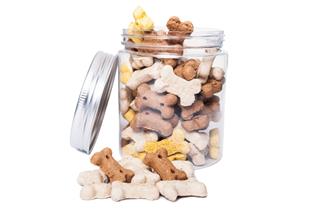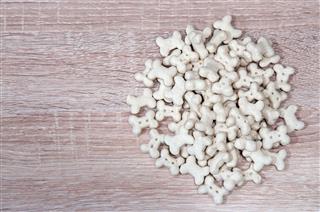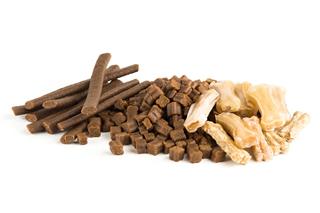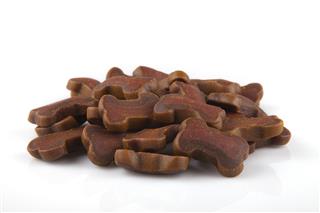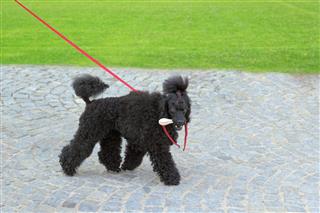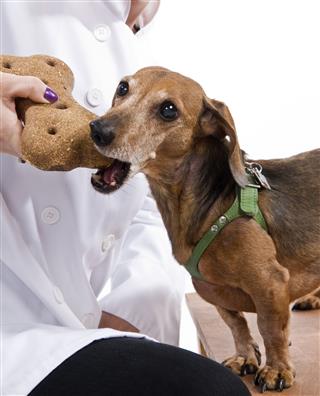
It’s the festive season, you just had a delicious ham for dinner, and now you’re wondering what to do with the bones. Thinking of giving them to your dog? Don’t! Read this DogAppy article to know why dog’s can’t, or shouldn’t, eat ham bones, and why it isn’t a safe idea.
Adult Supervision Recommended
Dogs are just overgrown babies, and you can give ’em a bone to really prove this point. A dog going at a bone will not understand when and where to stop. So keep a close watch on him/her at this time, and watch for any signs of bleeding or discomfort. Call the vet if you see anything amiss, but first, throw that bone out on a priority basis.
You hear ‘dog’, you say ‘bone’. It is a common reflex action! These two words have co-existed harmoniously for thousands of years now, but according to a recent FDA warning, it seems like we all may have been getting it wrong the whole time. Carmela Stamper, D.V.M., Center for Veterinary Medicine, Food and Drug Administration says, “Some people think it’s safe to give dogs large bones, like those from a ham or a roast. Bones are unsafe no matter what their size. Giving your dog a bone may make your pet a candidate for a trip to your veterinarian’s office later, possible emergency surgery, or even death.” She even advises keeping an eye on your dog around the ham (or other meat), and keeping it in a place that is out of his/her reach.
Why it isn’t a good idea
▶ If your dog chews on the bone too hard, it can cause broken teeth. These require immediate attention and are quite expensive to be fixed.
▶ The bone can get stuck in the food pipe while your dog tries to swallow it. This will lead to gagging, induced vomiting, and a very freaked out dog!
▶ Sharp splinters may cause mouth or tongue injuries. These are painful, scary to see, and involve a loss of blood – vet trip!
▶ Constipation is a condition that is easily detectable and readily curable. Watch out for the signs in your dog, as the calcium content in the bone may harden the stool, making it difficult to pass. Visit the vet to be on the safe side.
▶ The bone, or a piece of it, can enter your dog’s windpipe and lodge itself there. This classifies as a medical emergency because your dog will have trouble breathing, and nothing is worse than that.
▶ So your dog managed to swallow the bone down his/her throat, but it is too big to pass through the stomach. What to do? Call your vet, because this problem is going to need a trip to the emergency room. The vet will have to perform a surgery or an endoscopy to move that pesky bone.
▶ Alright, so the stomach was kind enough to let the bone through, but the intestines were a lot less understanding. A bone stuck in the intestines is a very serious problem, so get your dog to the emergency room ASAP.
▶ A common problem seen in many dogs is the bone getting stuck around the lower jaw. This can be a painful or scary affair for your pet, and will require veterinary intervention.
▶ If you see blood in the stools or in the rectal area, then do not waste any time in going to the vet, as these can be signs of internal bleeding or injury.
▶ Peritonitis, a bacterial infection where bone pieces poke holes in the dog’s stomach or intestines. This can be fatal.
▶ Ham bones may also cause pancreatitis, which leads to an inflammation of the pancreas. This is because ham is a fatty food, and is not good for dogs. This condition can prove to be fatal.
▶ Bloat is another problem that can turn serious. Ham is a salty foodstuff, and eating the bones may cause a dog to drink too much water, which can cause bloat, gas, or even a twisted stomach.
These are some of the health problems that your dog may face if he/she eats ham bones. No, this list is not biased only to ham bones, but it holds strong in their case.
Some safer alternatives
✦ Dog chews or dental bones are also safe substitutes that are quite popular among dog owners.
✦ If you wish to feed your dog natural bones, opt for softer varieties such as chicken bones. You can also give bigger bones that are chewable and have more meat on them.
✦ Observe your dog and see if he/she is a chewer, or prefers gulping things. The size and texture of the bone will have to be decided according to your dog’s tendency.
✦ Always keep a watch and listen closely during the bone-eating sessions. Signs of discomfort or the sounds of a used-up bone must ensure its prompt discarding.
✦ Visit your vet, as he/she will be able to provide you with the most appropriate bone alternatives for your dog.
This write up hopefully answers your question of whether dogs can eat ham bones, raw or cooked, and whether it is safe for them. The answer is, bones – sometimes, ham bones – no! So be prepared, be safe, and never make any bones about what you feed your dog, literally!
